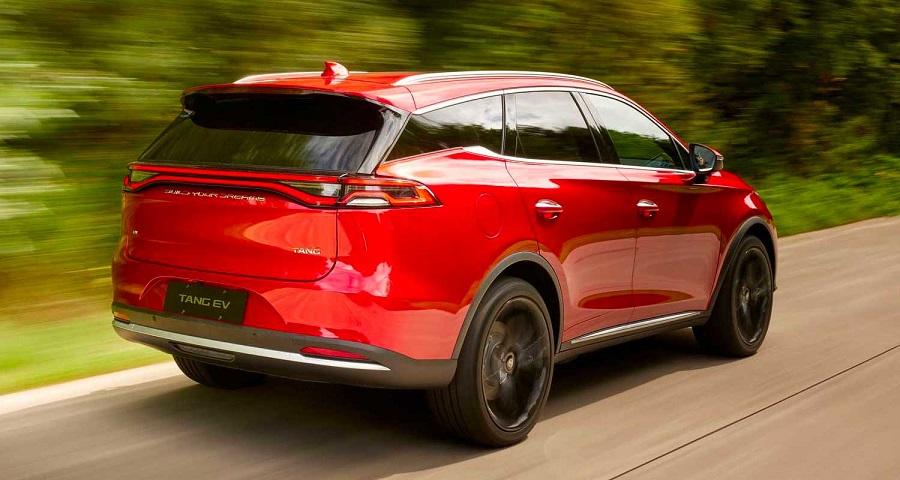In 2025, most new electric vehicles arriving in Colombia share a common feature: their electric technology or origins trace back to China.
This phenomenon is evident not only among purely Chinese-made brands but also in strategic partnerships where Asian groups provide technology, platforms, and batteries.
The shift from traditional manufacturers—European, American, and Japanese—is a clear sign of the Colombian electric market’s reshaping.
The balance of price and range favours Asian brands. Why?
Their control over the production chain enables them to offer more comprehensive products and democratise access to these new technologies.
With more affordable vehicles, greater range, and rapid adaptability, the Asian giant is steadily gaining ground in Latin America.
New electric brands, new landscape: 8 out of 10 have Chinese roots
In 2025, the brands either entering or strengthening their presence in Colombia with electric models follow a clear pattern: most are backed by Chinese companies or have ownership and production structures tied to China.
The case of Smart is a prime example. A brand born in Europe under Mercedes-Benz, it now operates through a partnership with Geely, the Chinese conglomerate that also owns Volvo and holds stakes in other European automakers.
Smart’s return to Colombia includes the Smart #1 and #3 models, both electric, with ranges of up to 440 km, 66 kWh batteries, and up to 272 hp.
Another major player is BYD, which is introducing at least six new models this year: the hybrid pick-up Shark, the electric SUV Song L, the plug-in hybrids Denza Bao 5 and Bao 8, and an updated Dolphin.
All of these are developed with in-house technology and, in neighbouring markets like Brazil, start at under $30,000.
Adding to this is Denza, BYD’s premium sub-brand, which is also making its way to Colombia with high-end electric models.
Deepal, a subsidiary of Changan Auto—one of China’s five largest manufacturers—joins the market with its S05 model, a range-extended hybrid.
GAC Motor, another Chinese automaker, is launching the electric Aion Hyper HT and Aion UT, featuring SUV designs and competitive range specifications.
Meanwhile, Great Wall Motors (GWM) debuts with the Haval Dargo and Tank 400, in hybrid or electric versions yet to be confirmed.
Chery, one of the most established Chinese manufacturers in Latin America, introduces the hybrid KP11 pick-up, aiming to compete in a segment traditionally dominated by combustion models.
In-house technology and controlled costs: the keys to China’s electric success
China’s dominance in the electric vehicle market is no coincidence. Brands from this country oversee their value chain—from lithium mining to the production of battery cells, electronic components, motors, and software platforms.
This integration enables them to offer products with greater range at lower prices.
For example, BYD models available in Colombia offer ranges between 400 and 520 km on the WLTP cycle.
By comparison, traditional brands like Renault or Nissan sell models such as the Kwid E-Tech (265 km range) or the Leaf (385 km), with prices close to or above those of Chinese manufacturers.
On price, models like the Smart #1 and electric vehicles from GAC and Deepal are expected to enter at around $27,000 to $35,000, while European competitors sit in higher price brackets despite similar ranges.
What about traditional brands?
The rise of Chinese brands in Colombia highlights the slow response from established manufacturers.
Although brands like Hyundai, Honda, and Volvo maintain a presence with new electric launches—such as the Casper, the Prologue, and the EX30 respectively—their volumes are smaller, and their positioning is more limited compared to the Chinese brands.
Hyundai offers a mixed approach: introducing the Casper in both electric and petrol versions. This strategy seems aimed at maintaining a presence without fully committing to the electric segment.
Honda, meanwhile, brings the SUV Prologue to the market, though its arrival isn’t supported by a complementary range.
Volvo, while strongly committed to electrification, relies on technology that is largely linked to Geely.
One of Colombia’s largest dealerships, Los Coches, already reflects this shift in its portfolio, incorporating models such as the Opel Rocks-e, Hyundai Ioniq 5, Kona Electric, and Volvo EX30.







